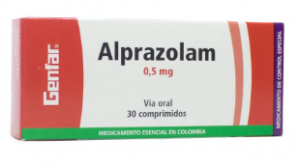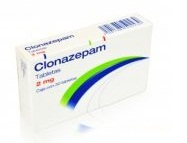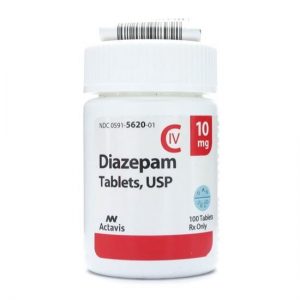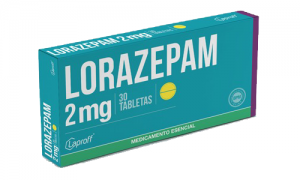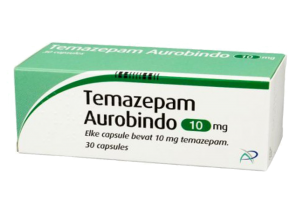The Most Common Psychiatric Drugs
The Most Common Psychiatric Drugs

The Most Famous 5 Psychiatric Drugs most Commonly used in the Psychiatric diseases are:

Alprazolam

- Brand Names: Xanax
- Therapeutic Category: Benzodiazepine
- Dosage Forms: oral (tablet/ solution)
- Use: Psychiatric Drugs
- Labeled Indications: Anxiety disorders/ Panic disorder
- Dosing:
- Dosing Adult: Anxiety disorders: Oral: Initial: 0.25 to 0.5 mg 3 times daily; titrate dose every 3 to 4 days; usual maximum: 4 mg/day
- Panic disorder: Initial: 0.5 mg 3 times daily; titrate dose every 3 to 4 days in increments ≤1 mg/day. Mean effective dosage: 5 to 6 mg/day, in 3 or 4 divided doses
- Pediatric: Immediate release: Initial: 0.005 mg/kg/dose or 0.125 mg/dose 3 times/day; increase in increments of 0.125 to 0.25 mg, up to a maximum of 0.02 mg/kg/dose or 0.06 mg/kg/day
- Dose Adjustments
- Renal Impairment:. No dosage adjustment
- Hepatic Impairment:25 mg 2 to 3 times daily.
- Adverse Drug Interaction:
Drowsiness/ fatigue/ sedation/ ataxia/ memory impairment/ irritability/ cognitive dysfunction
- Pharmacodynamics/Kinetics:
- Time to peak, serum:Immediate release: 1 to 2 hours
- Bioavailability: Immediate release: 84% to 92%
- Metabolism: Hepatic
- Half-life elimination: 11.2 hours
- Important Notes:
- Concomitant use of benzodiazepines and opioids may result in profound sedation, respiratory depression, coma, and death.
- If this is taken drug for a long time or at high doses, it may not work as well and you may need higher doses to get the same effect. This is known as tolerance
- Pregnancy & Lactation: Risk Factor D/ Present in breast milk
- Drug safety issue:
- ALPRAZolam may be confused with alprostadil, LORazepam, triazolam
- Xanax may be confused with Fanapt, Lanoxin, Tenex, Tylox, Xopenex, Zantac, ZyrTEC
Highly recommend online Marketing tool from SEMRUSH


Clonazepam

- Brand Names: Rivotril
- Therapeutic Category: Benzodiazepine
- Dosage Forms: oral (tablet)
- Use: Psychiatric Drugs
- Labeled Indications: Seizure disorders/ Panic disorder
- Off-Label: Bipolar disorder, manic or mixed episodes /Burning mouth syndrome/ Essential tremor/ Rapid eye movement (REM) sleep behavior disorder
- Dosing Adult: Panic disorder: Oral: 0.25 mg twice daily/ target dose: 1 mg daily (maximum: 4 mg/day).
- Seizure disorders: Oral: Initial daily dose not to exceed 1.5 mg given in 3 divided doses; may increase by 0.5 to 1 mg every third day
- Pediatric: Infants, Children ≤30 kg: Initial daily dose: 0.01 to 0.03 mg/kg/day (maximum initial dose: 0.05 mg/kg/day) given in 2 to 3 divided doses
- Dose Adjustments
- Renal Impairment:. No dosage adjustment
- Hepatic Impairment:25 mg 2 to 3 times daily.
- Adverse Drug Interaction:
Drowsiness/ fatigue/ panic disorder/ ataxia/ memory impairment/ behavioral problems
- Pharmacodynamics/Kinetics:
- Onset of action: 20 to 40 minutes
- Bioavailability: 90%
- Metabolism: Hepatic
- Half-life elimination: 17 to 60 hours
- Important Notes:
- Concomitant use of benzodiazepines and opioids may result in profound sedation, respiratory depression, coma, and death.
- Patients who take this drug may be at a greater risk of having thoughts or actions of suicide
- Pregnancy & Lactation: Clonazepam crosses the placenta/ Present in breast milk
- Drug safety issue:
- ClonazePAM may be confused with cloBAZam, cloNIDine, clorazepate, cloZAPine, LORazepam
- KlonoPIN may be confused with cloNIDine, clorazepate, cloZAPine, LORazepam

Diazepam

- Brand Names: Valium
- Therapeutic Category: Benzodiazepine
- Dosage Forms: oral (tablet/ solution)/ oral solution/ injection/ rectal gel
- Use: Psychiatric Drugs
- Labeled Indications: Acute ethanol withdrawal/ Anxiety/ Muscle spasm/ Seizures/ Status epilepticus
- Off-Label: Sedation in the intensive care unit/ Status epilepticus (rectal)
- Dosing Adult: Anxiety (symptoms/disorders): Oral: 2 to 10 mg 2 to 4 times daily if needed
- Muscle spasm: Oral: 2 to 10 mg 3 or 4 times daily
- Pediatric: Oral: Children: 0.2 to 0.3 mg/kg (maximum dose: 10 mg)
- Febrile seizure prophylaxis: Oral: Children: 1 mg/kg/day divided every 8 hours; initiate therapy at first sign of fever and continue for 24 hours after fever is gone
- Dose Adjustments
- Renal Impairment:. No dosage adjustment
- Hepatic Impairment: No dosage adjustment
- Adverse Drug Interaction:
Drowsiness/ Hypotension/ Headache/ ataxia
- Pharmacodynamics/Kinetics:
- Onset of action: Status epilepticus: IV: 1 to 3 minutes
- Bioavailability: Oral: >90%
- Metabolism: Hepatic
- Half-life elimination: Diazepam accumulates upon multiple dosing and the terminal elimination half-life is slightly prolonged.
- Important Notes:
- Concomitant use of benzodiazepines and opioids may result in profound sedation, respiratory depression, coma, and death.
- When taking this drug on a regular basis and stopping it all of a sudden, there may be signs of withdrawal.
- Pregnancy & Lactation: Risk factor D/ Present in breast milk
- Drug safety issue:
- DiazePAM may be confused with diazoxide, dilTIAZem, Ditropan, LORazepam
- Valium may be confused with Valcyte

Lorazepam

- Brand Names: Ativan
- Therapeutic Category: Benzodiazepine
- Dosage Forms: oral (tablet/ solution)/ solution injection
- Use: Psychiatric Drugs
- Labeled Indications: Anxiety/ Anesthesia premedication/ Status epilepticus
- Off-Label: Agitation in the ICU patient/ Alcohol withdrawal syndrome/ Chemotherapy-associated nausea and vomiting/ Rapid tranquilization of the agitated patient
- Dosing Adult: Anxiety usual dose: 2 to 6 mg daily in divided doses; however, daily dose may vary from 1 to 10 mg/day
- Premedication for anesthesia: IM: 0.05 mg/kg administered 2 hours before surgery (maximum dose: 4 mg)
- Pediatric: Chemotherapy-associated nausea and vomiting: Infants ≥1 month, Children, and Adolescents: Oral: 0.04 to 0.08 mg/kg/dose (maximum dose: 2 mg) once at bedtime the evening prior to chemotherapy and once the next day before chemotherapy
- Dose Adjustments
- Renal Impairment:. Oral: No dosage adjustment
- Hepatic Impairment: Severe impairment: Use with caution
- Adverse Drug Interaction:
Drowsiness/ sedation/ Dizziness/ unsteadiness
- Pharmacodynamics/Kinetics:
- Time to peak: Oral: 2 hours
- Bioavailability: Oral: 90%
- Metabolism: Hepatic
- Half-life elimination: Oral: 12 hours.
- Important Notes:
- Concomitant use of benzodiazepines and opioids may result in profound sedation, respiratory depression, coma, and death.
- When taking this drug on a regular basis and stopping it all of a sudden, there may be signs of withdrawal.
- Pregnancy & Lactation: Lorazepam and its metabolite cross the human placenta/ Present in breast milk
- Drug safety issue:
- LORazepam may be confused with ALPRAZolam, clonazePAM, diazePAM, KlonoPIN, Lovaza, temazepam, zolpidem
- Ativan may be confused with Ambien, Atarax, Atgam, Avitene

Temazepam

- Brand Names: Restoril
- Therapeutic Category: Benzodiazepine
- Dosage Forms: oral (capsule)
- Use: Psychiatric Drugs
- Labeled Indications: Insomnia: Short-term treatment of insomnia
- Dosing Adult: Insomnia: Oral: Usual dose: 15 to 30 mg at bedtime; some patients may respond to 7.5 mg in transient insomnia
- Dose Adjustments
- Renal Impairment:. Oral: No dosage adjustment
- Hepatic Impairment: No dosage adjustment
- Adverse Drug Interaction:
Drowsiness/ euphoria/ Dizziness/ anxiety/ Blurred vision
- Pharmacodynamics/Kinetics:
- Half-life elimination: 3.5-18.4 hours
- Time to peak, serum: 1.2-1.6 hours
- Metabolism: Hepatic
- Important Notes:
- Concomitant use of benzodiazepines and opioids may result in profound sedation, respiratory depression, coma, and death.
- When taking this drug on a regular basis and stopping it all of a sudden, there may be signs of withdrawal.
- When sleep drugs are used nightly for more than a few weeks, they may not work as well to help sleep problems. This is known as tolerance
- Pregnancy & Lactation: Risk factor x / Present in breast milk
- Drug safety issue:
- Temazepam may be confused with flurazepam, LORazepam, tamoxifen
- Restoril may be confused with Resotran, RisperDAL, Vistaril, Zestril

Read More
Copyright ©: All content on FADIC Website, including medical opinion and any other health-related information, and drug Informtation is for informational purposes only

 Log in
Log in Sign up
Sign up

